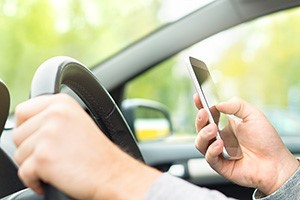Preventing Distracted Driving Saves Lives

Distracted driving. It’s been a growing concern for years. But, with today’s technology always at our fingertips, there are more distractions than ever while we’re driving.
What is distracted driving? The National Highway Traffic Safety Administration (NHTSA) defines distracted driving as “any activity that could divert a person’s attention away from the primary task of driving.” All distractions endanger driver, passenger, and bystander safety.
Studies show that the risk of a crash is four times as likely when someone is using a cell phone. Hands-free devices have not been found to add safety while driving. The brain is distracted by conversation, regardless of the device.
Because texting requires visual, manual, and cognitive attention, the NHTSA states that it is “by far the most alarming distraction.” Sending or receiving a text message takes the driver’s eyes off the road for an average of 4.6 seconds. At 55 miles per hour, that’s equivalent to driving the length of an entire football field without looking at the road.
Cell phones are a major factor in distracted driving, but they’re not the only one. Other common distractions include:
- Eating and drinking
- Talking to passengers
- Grooming
- Reading, including maps
- Using a navigation system, such as GPS
- Watching a video
- Adjusting a radio or another part of the infotainment system



